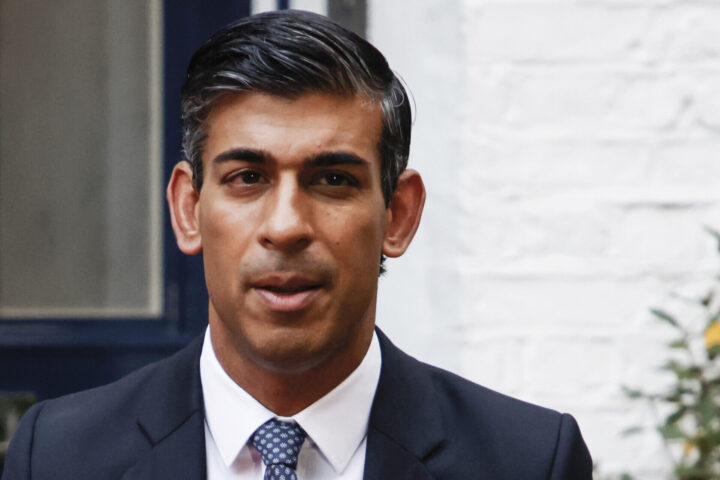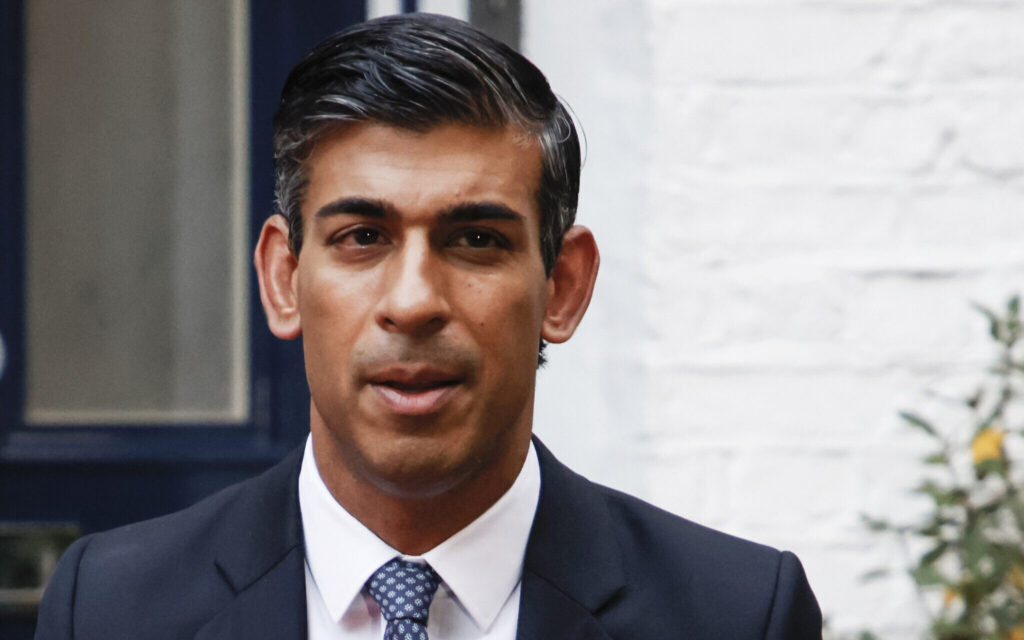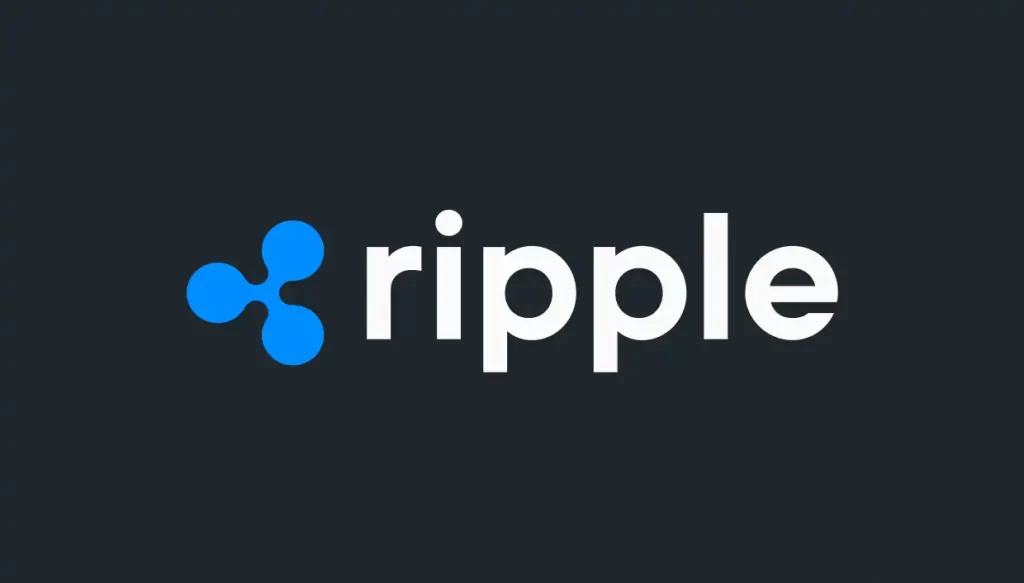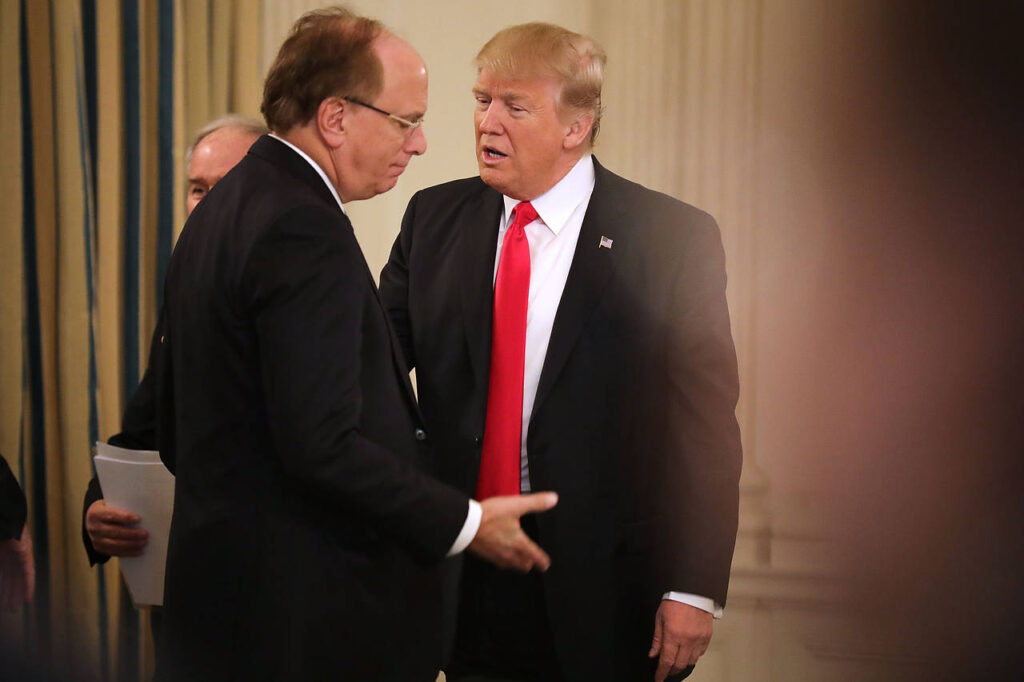Rishi Sunak’s house in Yorkshire made headlines in the UK media in 2024.
Rishi Sunak, the UK’s Prime Minister, has made a name for himself not only through his political career but also through his personal life, including his residence in Yorkshire. His house in this historic county has drawn attention for various reasons, including its reflection of his personal success, taste, and the lifestyle of a high-profile political figure.
Yorkshire Residence Overview
Rishi Sunak’s house in Yorkshire stands as a testament to the region’s rich cultural and architectural heritage. Yorkshire, known for its breathtaking landscapes, historic towns, and vibrant communities, offers a fitting backdrop for the residence of one of the country’s most prominent political figures. The house is more than just a dwelling; it is a symbol of Sunak’s roots and his connection to the community he serves.
Architecture and Design
- Historic Charm: Sunak’s Yorkshire home is notable for its adherence to the traditional architectural styles of the region, featuring classic British craftsmanship.
- Modern Amenities: While the exterior respects historical aesthetics, the interior is equipped with modern amenities, blending comfort with elegance.
- Gardens and Landscaping: The property boasts meticulously maintained gardens, highlighting the natural beauty of Yorkshire and providing a serene retreat from the demands of political life.
Location and Community
- Proximity to Nature: Nestled in the heart of Yorkshire, the house is surrounded by the natural beauty for which the area is famous, offering peace and privacy.
- Community Engagement: The location of the house places Sunak within the community he represents, enabling him to stay connected with the local populace and their concerns.
Historical Significance
- Reflection of Yorkshire’s Heritage: The residence is a piece of the broader tapestry of Yorkshire’s history, showcasing the architectural evolution of the region.
- Political Symbolism: As the home of the Prime Minister, it represents the blending of personal and professional worlds, situated outside the usual power centers of London.
Personal and Professional Space
- Family Life: The house serves as a sanctuary for Sunak and his family, a place where they can enjoy private life away from the public eye.
- Work from Home: Given the demands of his role, the house is also equipped to function as a secondary office, where Sunak can work remotely, reflecting the modern blending of personal and professional lives.
Role in Sunak’s Political Image
- Accessibility and Relatability: Owning a home in Yorkshire helps Sunak project an image of accessibility and relatability, connecting him with a broader segment of the UK population.
- Symbol of Success: The property also serves as a symbol of Sunak’s personal success, reflective of his career in finance before transitioning into politics.
Contributions to the Local Economy and Community
- Economic Impact: The presence of high-profile individuals like Sunak can have a positive impact on local economies, from employment opportunities to increased interest in the area.
- Community Involvement: Sunak and his family’s involvement in local events and causes contributes positively to the community’s social fabric.
Challenges and Controversies
- Privacy Concerns: Living in a high-profile residence comes with challenges, including maintaining privacy and security for the family.
- Public Scrutiny: As a public figure, Sunak’s choice of residence and lifestyle are subject to scrutiny, balancing public interest with personal privacy.
Final Thoughts
Rishi Sunak’s house in Yorkshire is more than just a personal residence; it embodies a blend of historical significance, architectural beauty, and a deep connection to the local community. As the Prime Minister of the UK, Sunak’s choice to maintain a home in Yorkshire speaks volumes about his values, priorities, and the image he wishes to project both as a politician and a citizen.
The house stands as a symbol of his commitment to his roots and his role in the broader narrative of Yorkshire’s ongoing story. Through this residence, Sunak bridges his personal heritage with his public responsibilities, highlighting the importance of balance, connection, and community in his life and work.
On March 5, Bitcoin’s market value soared to an unprecedented peak of $1.35 trillion, marking a significant milestone in the cryptocurrency’s history.
This surge was fueled by a 3.35% increase in Bitcoin’s price over the previous 24 hours, reaching $67,322 by 12:55 pm UTC.
Over the past week, the first-ever cryptocurrency saw an impressive gain of over 17%, as reported by CoinMarketCap.
This record-setting performance momentarily positioned Bitcoin as the world’s eighth-largest asset, surpassing the $1.347 trillion market cap of silver, the globe’s second-most valuable precious metal, as per CompaniesMarketCap.
The remarkable climb followed a record-breaking daily close of $68,245 on March 4, eclipsing its prior highest close of $67,525 on November 8, 2021.
This development has fueled predictions by analysts that Bitcoin’s price might hit the $100,000 threshold by the end of 2024.
A significant factor contributing to Bitcoin’s bullish momentum has been the recent approval of spot Bitcoin exchange-traded funds (ETFs) in the United States.
READ MORE: Bitcoin Withdrawals Surge as Exchanges See Largest Outflows in 5 Years Amid Price Rally
A March 4 Bitfinex research report highlighted a 44% surge in Bitcoin’s value in February, attributing the growth to a $7.5 billion investment in Bitcoin ETFs.
This influx not only catalyzes market expansion but also underscores a positive market sentiment and the potential for further investment.
Furthermore, Bitcoin futures on centralized exchanges have witnessed record-high open interest, signifying strong investor confidence in a continuous uptrend.
Bitfinex analysts noted that the total open interest for Bitcoin futures contracts exceeded $26 billion on March 1, breaking the previous high of $24 billion set in late 2021.
Adding to the flurry of activity, MicroStrategy, the leading corporate investor in Bitcoin, announced plans to raise $600 million to finance additional Bitcoin purchases.
The funding, disclosed in a March 4 X post by executive chairman Michael Saylor, will be sourced through senior convertible notes, highlighting the company’s ongoing commitment to Bitcoin investment amidst a buoyant market.
This article focuses on Bianca Censori’s alleged crypto investments, and covers other aspects about her personal life, such as her age and career.
She is believed to be Kanye West’s new wife, according to reports earlier in 2023. This follows Ye’s previous marriage to reality TV star and entrepreneur Kim Kardashian, who is now a billionaire and one of the wealthiest self-made women in the United States. The couple, who shares four children, finalized their divorce in November 2022.
On January 13, 2023, TMZ reported that Ye had married Censori. Although there was mention of a wedding ceremony, it was unclear if they had filed a marriage certificate to make it legally binding.
Censori is known for her distinctive fashion choices, but her recent wardrobe selections in Italy have sparked controversy. During a visit to Florence with Ye, she wore revealing sheer bodysuits and a nude outfit while clutching a purple pillow close to her chest. These outfits did not sit well with locals, and one incident in Venice drew significant attention.
The couple was photographed touring the Venetian canals on a boat, and while the exact details of the incident remain unclear, reports suggest that locals were outraged by their actions, leading to viral photographs.
Following this incident, Venetian Turismo Motoscafi, the company that owns the boat, banned Kanye West and his new wife for life. In a statement to Daily Mail Australia, the company stated that the couple would no longer be welcome on any of their boats and that their staff had been unaware of the controversial events on the boat.
Does She Own Crypto?
There have been numerous posts on social media claiming that Bianca Censori is a crypto investor and is linked to several projects. However, it is likely that scammers are trying to use her reputation to attract victims, and there’s no official confirmation of her being involved in any crypto project.
Amidst the ongoing media frenzy, many are curious about Bianca Censori. Here are some key facts about her:
1. Age & Australian Roots:
Bianca Censori hails from Melbourne, Australia, where she was born and raised. She grew up in the affluent Melbourne suburb of Ivanhoe. While some reports suggest she has two sisters, Angelina Censori and Alyssia Censori, there is uncertainty about whether Alyssia is her sister or a relative. Her exact age is also not widely known, but The Sun reported in July 2023 that she is 28 years old and was born on January 5, 1995.
2. Design Background:
Censori’s educational background includes attending Carey Baptist Grammar School and pursuing a Bachelor in Architecture (BArch) at the University of Melbourne from 2013 to 2017. She completed her Master in Architecture (MArch) at the same university in 2020. Her LinkedIn profile indicates that she worked as a design consultant at Kelektiv in South Yarra from February 2016 to July 2017. Afterward, she worked as a student architect at DP Toscano Architects in Collingwood for three years, until June 2020. Her profile also mentions her role as an architectural designer at Ye’s Yeezy brand since November 2020.
3. Entrepreneurial Spirit:
While still an undergraduate student from 2013 to 2017, Censori ran her own accessories label called Nylons Jewellery. In an interview with i-D in 2016, she mentioned her efforts to keep her studies and her accessory business separate but noted that both inspired her creative work.
4. Melbourne Design Week Participant:
Censori’s reputation as a designer is well-established, and she participated in Melbourne Design Week from March 17 to 27, 2022. She was part of a group exhibition called “Vital Pleasures,” where her role as an architectural designer for Ye in Los Angeles was recognized. Her work engages with philosophical, aesthetic, and cultural references, providing a unique perspective in her designs for buildings and objects.
5. Family Support:
When news of her supposed marriage to Kanye West emerged, Censori’s sister Angelina expressed excitement, saying, “It’s very exciting news for both my sister and the family but we choose to have some privacy for the time being.” Alyssia also shared their family’s happiness, stating, “We’re super happy for them both.”
Additionally, people close to Kanye and Censori have voiced their happiness about the union. An insider told Us Weekly in 2022, “Things couldn’t be better for Kanye and Bianca, and they’re doing amazing.” The source emphasized how Bianca complements Kanye on many levels, and their collaboration on projects is a testament to their strong bond.
In conclusion, Bianca Censori, Kanye West’s rumored new wife, has a background in design, including a degree in architecture and experience in the field. She once owned her accessories label, participated in a prestigious design event, and has received support and well-wishes from both her family and those close to Kanye. Despite the controversy surrounding their recent actions in Italy, the public’s fascination with this high-profile couple remains undeniable.
In the rapidly evolving world of online gambling, Bitcoin and other crypto casinos are making waves. Crypto Lists found that over 35% of all new online casinos from 2023 now accept cryptocurrencies. Offering an array of advantages such as privacy, new design, fun crash games, quick transactions, and enhanced security, they’re becoming the go-to choice for many players.
However, the struggle to find brand new crypto casinos and upcoming ones can often be a challenging task, before stumbling upon the fast growing website with their own list of more than 70 recently launched brands – https://www.cryptolists.com/casinos/new/.
This article explores why finding these newly launched brands is so interesting and offers tips on how to navigate the process successfully.
The Allure of New Crypto Casinos
The integration of blockchain technology and cryptocurrency use in new online crypto casinos has revolutionized the way we perceive and engage in online gambling. Crypto casinos, as the name suggests, are online betting platforms that accept cryptocurrencies such as Bitcoin, Ethereum, and Litecoin among others as a form of payment. These casinos are a product of the union between leading-edge tech and traditional online gambling.
New crypto casino sites released in 2023 often bring fresh and exciting features, state-of-the-art graphics, and exceptional playability. They tend to entice players with exciting promotions and welcome bonuses, providing an incentive to try something new. These bonuses, which can range from free spins to deposit matches, give players the opportunity to increase their chances to win.
Moreover, these platforms might offer various cryptocurrencies, expanding the options for players who use different digital coins. In addition to the Bitcoins and Ethers of the world, they might present players with the opportunity to bank with Cardano or Solana, for example.
Upcoming Bitcoin Casinos
The latest innovation in the space is called upcoming crypto casinos, where reviews of sites about to launch are shown. Some of the leading sites, such as Crypto Lists, are quick to find out about the newest brands and therefore show upcoming casinos in a separate list. Usually, the launch date is in the coming days or weeks, but in some cases it can be even one month away.
Innovation and User Experience
One of the defining characteristics of new crypto casinos is their emphasis on innovation and user experience. These platforms – particularly when they’re decentralized – often leverage the unique capabilities of blockchain technology to introduce features like provably fair gaming, where players can independently verify the fairness of each game’s outcome.
Additionally, some new crypto casinos are experimenting with decentralized applications (DApps) that allow players to participate directly in the casino’s governance and decision-making processes. Furthermore, the use of smart contracts on blockchain platforms enables automated and transparent transactions, minimizing the need for intermediaries. This can lead to faster payouts, improved security, and reduced operational costs.
New casinos are actively exploring ways to enhance these advantages, striving to set new industry standards for seamless transactions and player interaction. These are just some of the additional reasons why finding these new casinos is so crucial to players with their fingers on the pulse of this new iGaming niche. Markus Jalmerot from Crypto Lists expects that regulation and state policy in the U.S will continue to change over the coming two years and eventually a wider range of cryptocurrencies will be accepted like in Europe with their MICA regulation coming into effect in mid 2024.
The Importance of Accurate Launch Dates
The launch date of a crypto casino plays a crucial role in its evaluation. Some review sites might inaccurately portray a casino as newer than it is, misleading potential players. The reasons this occurs can be rather benign, such as simply not having the knowledge on how to identify launch dates, or perhaps assuming it’s not important information to get right. Sometimes, the reasons can be more malign, such as review sites wanting to promote a casino as newer than it really is to make their own site appear more on the pulse.
However, the best review sites use in-depth research methods like the Wayback Machine digital archive – that highlights when a site has been crawled by search engines – to provide accurate launch dates, ensuring transparency and trustworthiness in their reviews. In addition, they will speak to representatives of the casino to ensure the information is all accurate before publishing their review. For example, if one site says they have reviews of brand new casinos launched 2023 but half of those were really launched several years prior, then they’re providing false information and not giving their readers the unique features and fresh bonuses they’re searching for.
The Struggle to Find Genuine Crypto Casinos
Finding new crypto casinos can be a daunting task. It requires sifting through numerous review sites, many of which only offer summaries rather than detailed analysis. Players are often left wanting more comprehensive information, such as the specific cryptocurrencies accepted by the casino and the intricacies of how the platform operates. Not to mention first-person opinion from reviewers who understand the gambling niche and comment on how a site feels to use and navigate.
The last thing a keen crypto gambler wants is to be presented with a casino that’s been flagged as a crypto-accepting one, only to be left wanting after they’ve completed KYC procedures, presented with only fiat options. That’s why the trusted review sites will sign up and go through this process themselves, so that potential players have authentic information.
Better Safe than Sorry
As the crypto casino landscape evolves, regulators around the world are grappling with how to address this emerging sector. It’s yet another reason why having up-to-date and accurate information is so crucial when looking for the best and most brand new crypto casino sites. Top reviewers will assess the licensing information on a casino’s website, analyze the terms and conditions, and make sure things are safe and sound before recommending a platform. Alternatively, they’ll highlight when a casino’s licensing information is vague or absent entirely.
Players seeking to explore new crypto casinos must be mindful of the regulatory landscape in their region. While some platforms prioritize regulatory compliance and work towards obtaining licenses, others may operate in less regulated environments. It’s crucial for players to conduct their due diligence and choose casinos that prioritize transparency, security, and responsible gaming practices. And, to make sure that if they’re relying on review sites with toplists, that those sites present licensing information about the casino’s operators and include information about the license itself. There are also some well known people and organisations that is less trusted and the top review sites make sure that people find out about both the good and bad actors in this sector.
In conclusion, while the search for new crypto casinos from 2023 can be a struggle, it’s a worthwhile endeavor. The benefits of engaging with these platforms are vast, from the potential for welcome bonuses to the opportunity to experience cutting-edge gaming features and modern and innovative design. It’s essential to look to trustworthy review sites that offer accurate launch date information and detailed insights into the casinos’ operations. Armed with the right information, players can confidently explore the innovative world of new crypto casinos.
The world of web3 development represents the third era of the internet, focusing on decentralized applications and systems. Ensuring innovation in this space is vital for fostering a future where the internet is more open, transparent, and controlled by the users. Here’s a deeper look into the subject.
Introduction
Web3, or Web 3.0, signifies a paradigm shift from the centralized platforms of Web 2.0 to a decentralized model where users regain control over their data, identities, transactions, and interactions. At its core, web3 leverages blockchain technology, cryptography, decentralized finance (DeFi), and decentralized applications (DApps) to create a trustless and permissionless environment.
Ensuring Innovation in Web3 Development
1. Educational Initiatives
One of the first steps in ensuring innovation is fostering education and understanding. Developing comprehensive educational resources that cover the underlying technologies, concepts, and philosophies of web3 can provide a fertile ground for budding developers and enthusiasts. Universities, online platforms, and industry leaders should work together to create courses, workshops, and certifications focusing on blockchain development, smart contracts, cryptography, and related subjects.
2. Regulatory Environment
Government and regulatory bodies must strike a balance between ensuring legal compliance and fostering growth. Over-regulation could stifle innovation, while a lack of regulation could lead to fraudulent practices. A transparent, flexible, and open-minded regulatory approach that encourages experimentation is key to innovation in web3 development.
3. Funding and Support
Venture capital, government grants, and community funding can act as catalysts for innovation. Financial support for startups and projects focusing on web3 technologies can fuel research, development, and deployment of new products and services. Crowdfunding platforms based on decentralized finance models could also serve to democratize investment opportunities.
4. Open-Source Collaboration
The open-source model has been a major driver of innovation in the tech industry. Encouraging open-source projects in web3 development can lead to collaborative efforts across geographies and domains. It fosters a community-driven approach where developers can learn from each other, reuse code, and build on top of existing projects.
5. User-Centric Design
Web3 development should center around user experience and user needs. A human-centered design approach that takes into consideration usability, accessibility, and inclusivity can ensure that the decentralized web is not just for tech-savvy users but is accessible to everyone.
6. Interoperability
Innovation in web3 must also address the challenge of interoperability between various blockchain networks. Interoperable solutions can allow seamless communication between different protocols, enhancing efficiency and opening up new possibilities for collaboration and creativity.
7. Emphasizing Security
Security is paramount in web3 development. Innovations in cryptographic techniques, secure identity management, and trustless authentication methods will play a vital role in building a secure and resilient web3 ecosystem.
8. Sustainability
The environmental impact of some blockchain networks has been a point of concern. Innovations in consensus mechanisms and energy-efficient protocols can contribute to a more sustainable future for web3 development.
Conclusion
Ensuring innovation in web3 development is not a solitary task but requires the collaboration of multiple stakeholders, including developers, users, investors, educators, regulators, and more. By focusing on education, regulations, funding, collaboration, user experience, interoperability, security, and sustainability, web3 can mature into a robust and user-friendly environment that has the potential to revolutionize the way we interact with the digital world.
The transition to web3 represents more than a technological evolution; it’s a social and cultural shift towards a more democratic and decentralized digital realm. Ensuring continuous innovation in this space is vital for fulfilling the promise of web3, providing a decentralized, transparent, and user-empowering digital future.
Arweave, IPFS (InterPlanetary File System), and Filecoin are decentralized storage networks that aim to transform how data is stored and retrieved on the Internet. By examining these three systems, we can gain insight into their different approaches, strengths, and weaknesses.
Arweave
1. Overview: Arweave is a decentralized storage network designed to offer permanent file storage. By creating a system in which data is stored permanently with a one-time payment, it seeks to prevent the loss of historical and cultural information on the web.
2. Technology: Arweave uses a structure called the “blockweave,” which is similar to a blockchain but includes proof of access to previous blocks in the current block’s hash. This leads to high redundancy and ensures the data remains retrievable forever.
3. Economy: The native token, AR, is used to pay for data storage. The cost is calculated based on the data size, and once paid, the data is stored permanently without additional fees.
4. Security & Sustainability: Arweave’s architecture ensures that as long as there are miners willing to store data, it remains accessible. The network is also environmentally friendly, as it relies on a proof-of-access model, which requires less computational power compared to traditional proof-of-work systems.
5. Use Cases: Permanent data storage makes Arweave suitable for applications like preserving vital records, historical data, academic research, and more.
IPFS
1. Overview: The InterPlanetary File System (IPFS) is a peer-to-peer (P2P) file-sharing system that seeks to make the web faster, safer, and more open.
2. Technology: IPFS replaces traditional location-based addressing with content-based addressing. When you request a file, instead of asking for it from a specific location, you request it based on its hash. This ensures that even if a particular node goes offline, the data can still be retrieved from any other node that has it.
3. Economy: Unlike Arweave and Filecoin, IPFS doesn’t have a built-in economic incentive for file storage. Nodes store files voluntarily, and data may be lost if no node is willing to host it.
4. Security & Sustainability: IPFS emphasizes data integrity and censorship resistance. However, its lack of economic incentives can lead to potential sustainability issues.
5. Use Cases: IPFS is suited for distributed web hosting, large-scale data sharing, and collaboration in a decentralized environment.
Filecoin
1. Overview: Filecoin is a decentralized storage network built as an incentive layer on top of IPFS. It aims to provide secure and verifiable storage at competitive prices.
2. Technology: Filecoin leverages the existing IPFS infrastructure but adds a blockchain layer to incentivize storage. Miners are rewarded with Filecoin tokens (FIL) for providing storage space and retrieving files when requested.
3. Economy: Filecoin has built a marketplace where users pay miners in FIL to store and retrieve data. This creates a competitive market, driving down prices and ensuring data availability.
4. Security & Sustainability: The proof-of-replication and proof-of-spacetime mechanisms in Filecoin ensure that data is securely stored and available. These cryptographic proofs guarantee that miners are actually storing the data they claim to.
5. Use Cases: Filecoin is suitable for applications requiring secure and affordable large-scale data storage, like cloud services, data backup, and more.
Comparison and Conclusion
Arweave:
- Strengths: Permanent storage, one-time payment, environmental sustainability.
- Weaknesses: More suited for immutable data, less flexibility for temporary storage.
IPFS:
- Strengths: Decentralized content addressing, fast retrieval, censorship resistance.
- Weaknesses: Lack of economic incentives can lead to data loss, less suited for permanent storage.
Filecoin:
- Strengths: Economic incentives for storage, competitive pricing, built on proven IPFS technology.
- Weaknesses: Complexity of the incentive model, reliant on market dynamics.
In summary, Arweave, IPFS, and Filecoin each offer unique approaches to decentralized storage. Arweave is focused on permanent data preservation, IPFS emphasizes content-based addressing and open sharing, while Filecoin introduces economic incentives to IPFS for robust and competitive storage solutions.
The choice between them should be guided by the specific requirements of a project or application, such as the need for permanent storage, censorship resistance, or competitive pricing. By doing so, one can harness the full potential of these decentralized technologies to foster a more secure, open, and resilient web.
The Forex market is one of the world’s most active and liquid markets, with large amounts of capital traded daily. It offers investors excellent profit potential but can also be a source of significant risk. To successfully navigate the Forex market, it is essential to have an understanding of currency pairs and market volatility.
What are currency pairs?
Currency pairs refer to two different currencies traded against each other on the Forex market, with the first currency as the base currency while the second is the quote currency. Market forces determine the exchange rate of the pair and can fluctuate rapidly. Investors buy or sell the pair based on their expectations for future changes in the exchange rate.
What is volatility?
Volatility refers to how much a currency pair’s price fluctuates over time and is expressed as a percentage, with higher percentages indicating more significant levels of volatility. A volatile currency pair is one whose exchange rate moves quickly and often unpredictably, while a low-volatility pair has more consistent and predictable movements.
Understanding currency pairs
Many currency pairs are available to trade on the Forex market. Major currencies such as the US Dollar, Euro and Japanese Yen are the most prevalently traded, but less liquid currencies like the Swiss Franc, New Zealand Dollar and Australian Dollar can also be found. Each pair has its characteristics, so it’s essential to understand how they behave before entering a trade.
Navigating volatility
Volatility is an unavoidable part of trading in the Forex market. However, it is possible to manage risk by selecting pairs with lower levels of volatility or through strategies such as hedging or diversification. It is also essential to stay informed about news relevant to the currency pair being traded and keep an eye on fundamental technical indicators that can indicate future movements in price.
Exploring leverage and margin
Leverage and margin are crucial when trading currency pairs in the Forex market. Leverage is the ratio of exposure a trader can obtain to the capital they have invested. For example, a leverage of 10:1 gives the investor access to $10 for every dollar they invest. Margin is the funds required to open and maintain a position, usually expressed as a percentage.
Using leverage and margin, traders can take on more excellent positions than their account balance allows. Investors must understand both concepts before trading to avoid taking on excessive risk. Careful risk management is critical when navigating the Forex markets, as it allows investors to stay within their risk appetite while still having the opportunity to profit from movements in currency pairs.
Analysing risk management strategies
Risk management is crucial as it helps traders to stay within their risk appetite while still having the opportunity to profit from movements in currency pairs. Several strategies can be used when analysing and managing risk, including diversification, hedging and stop-loss orders.
Utilising technical indicators to guide trading decisions
Technical indicators are an essential tool in the Forex market, allowing traders to identify and interpret patterns in the exchange rate of a currency pair. By combining technical indicators with fundamental analysis, traders can gain valuable financial insights that can help guide their trading decisions.
The moving average indicator is among the most popular technical indicators traders use in forex trading. This indicator shows the average price over a period and is often used to identify trends or when the market is overbought or oversold. Other popular technical indicators include Fibonacci retracement levels, Bollinger Bands, and relative strength index (RSI).
Another type of indicator used by Forex traders is oscillators, which measure momentum and are designed to indicate when a reversal or continuation of a trend might occur. The MACD (Moving Average Convergence Divergence) oscillator combines short-term and long-term averages and looks for signals when they crossover. Other oscillators include Stochastics, Commodity Channel Index (CCI) and Average Directional Movement Index (ADX).
Traders may also use sentiment indicators to gauge sentiment within the market. Sentiment indicators monitor prices, volume, and open interest to determine whether investors are generally optimistic or pessimistic about a particular currency pair. Traders can use this information to assess where sentiment may be headed to make informed trading decisions.
Traders need to understand how to interpret technical indicators before entering into trades on the Forex market. Combining these indicators with understanding fundamental economic drivers can help ensure more successful trades in volatile markets.
The bottom line
Navigating the Forex market can be challenging, but understanding currency pairs and volatility is essential for successful trading. Staying up-to-date on the news related to the pair being traded and utilising leverage and margin judiciously are essential considerations that need to be considered when trading in the Forex market. Risk management strategies such as hedging or diversification and technical indicators can also help guide decisions when entering trades. By better understanding how currency pairs interact with each other, traders can increase their confidence and likely enjoy a more profitable experience in the Forex market.
Crypto has become more and more popular over the past decade. But some of us might still doubt what crypto actually is! In this article we will give you a description of crypto, and we will guide you on how to get started. Read along if you are curious!
What is crypto?
Crypto is a virtual currency, which means that it solely exists online and not physically like USD, AUD and others. By only existing online – crypto truly differs from any other currency you might trade! Crypto was developed back in 2008 by an anonymous person or group called Satoshi Nakamoto. Since 2008, crypto has only increased in popularity within the trading world.
You may wonder why exactly this virtual currency became so popular so fast. The reason is simply this: crypto is very volatile. A volatile investment can obviously be risky – however, it might also be beneficial, if you are lucky. Far from everyone will be lucky, but some are able to generate massive profits. No wonder the virtual currency became as popular as it did.
Trading with crypto can be a dangerous game. Therefore, it is important to not ever invest a larger amount of money into crypto than what you can afford to lose in case things go south. There is no doubt that this risky game is appealing for some – and many Daytraders have tried their luck with crypto. Daytraders are people who work full time with trading. Therefore, they are more likely to have the appropriate amount of time to carefully watch how a crypto currency is acting.
Get started!
It is easy to get started if you have an interest in investing in crypto currency. However, bear in mind that crypto currencies are not controlled by any underlying banking institute. That is also what makes crypto so volatile in the first place. Likewise, it means that many scams feature within this field of crypto trading.
To avoid scams etc., it is very important that you find a good trading platform. You can compare and investigate many different trading platforms through 247trading. Here, you can also read much more about different types of trading, as it is important to fully understand the trading world before entering it.
When you are ready to start investing in crypto currency, it is also important to look for the “white paper”. Every crypto currency has a “white paper”. This is similar to a business with a business plan! Without a “white paper”, that describes what you are investing in and what the plan with the concerned crypto is, you are likely to be scammed. Therefore: always look out for the “white paper”! It will be beneficial to you in the end.
When investing in crypto, it is also a good idea to not always listen to others. Your fellow investors might have good advice, but it can be crucial to be critical towards their words. Do your own research instead of blindly listening to others!
In December 2020, the U.S. Securities and Exchange Commission (SEC) launched a lawsuit against Ripple Labs, the company closely associated with the cryptocurrency XRP. The SEC alleged that Ripple Labs, along with its CEO Brad Garlinghouse and co-founder Chris Larsen, conducted a $1.3 billion unregistered securities offering by selling XRP.
An Overview of XRP
XRP was created by Ripple Labs in 2012 as a digital asset and a technology protocol. It’s designed to facilitate faster, more efficient cross-border transactions than traditional financial methods allow. Ripple’s payment ecosystem, RippleNet, and its payment protocol, the XRP Ledger, utilize XRP for liquidity and transfer purposes. This, however, has led to an ongoing debate: Is XRP a security or a currency?
SEC’s XRP Lawsuit
The SEC’s argument is rooted in the premise that XRP functions more as an investment contract rather than a medium of exchange. In the SEC’s view, purchasers of XRP anticipated profits predominantly from the efforts of Ripple Labs and its executives, drawing parallels with the Howey Test, a precedent used to determine whether an asset qualifies as an investment contract, and thus a security.
Conversely, Ripple Labs argues that XRP is a currency, not a security, since it serves a utility in facilitating transactions. Ripple also asserts that the company’s performance and the value of XRP aren’t as intertwined as the SEC implies. Their argument points to the fact that XRP is traded on a fully functioning currency market, with the price determined by supply and demand dynamics, not necessarily the actions of Ripple Labs.
Furthermore, Ripple Labs defends that it has never conducted an Initial Coin Offering (ICO), nor offered future tokens to raise money. It maintains that XRP was created all at once with a finite supply of 100 billion, of which a significant proportion was retained by Ripple Labs and its founders, but the remainder entered circulation in the open market.
The Ripple lawsuit has global implications for the blockchain and cryptocurrency industry. This is because the verdict could set precedents for how digital assets are classified and regulated. The lawsuit poses questions about the characteristics of a decentralized network, the definition of a security, and the jurisdiction of regulatory bodies over innovative technologies.
The lawsuit brings attention to the gray areas in cryptocurrency regulation. While Bitcoin and Ethereum are recognized as commodities by the U.S. Commodity Futures Trading Commission (CFTC), most cryptocurrencies do not have a clear regulatory classification. The SEC’s lawsuit against Ripple Labs can be seen as an effort to establish regulatory standards for the crypto market.
The outcome of the lawsuit may influence the level of institutional adoption of blockchain technologies. Institutions may be less likely to adopt a technology associated with regulatory risks, which can lead to fines or litigation. If XRP is classified as a security, it could deter financial institutions from using the XRP Ledger for liquidity purposes, affecting Ripple’s operations and the broader adoption of its technology.
If, on the other hand, the court finds in favor of Ripple, it could significantly diminish the SEC’s influence over the crypto industry and potentially pave the way for a less restrictive regulatory environment. This might encourage greater investment and innovation in the crypto space.
At its core, the Ripple Labs lawsuit represents a clash between innovation and regulation. While the SEC seeks to apply traditional regulatory frameworks to new technology, Ripple Labs and other crypto advocates argue for an updated understanding of what constitutes a security in the digital age.
Moreover, the lawsuit has raised questions about the level of decentralization necessary for a network to be deemed a utility rather than a security. XRP, though it operates on a decentralized ledger, was largely distributed by a single entity, Ripple Labs, which the SEC argues gives it characteristics of a security.
As of June 2023, the lawsuit remains unresolved, and its implications continue to be the subject of heated debate within the cryptocurrency community. Regardless of the outcome, the Ripple Labs lawsuit represents a landmark case in the rapidly evolving intersection of law, finance, and technology.
Other Stories:
Melanion Capital Launches Bitcoin Equities ETF on Euronext Amsterdam Stock Exchange
Bitcoin Policy Institute Lambasts BTC Research Paper
Cryptopay Issues Guidance to Card Users After Suffering Setback
Larry Fink, the co-founder, chairman, and CEO of BlackRock, Inc., is a prominent figure in the global finance industry, and he has a colossal net worth. Known for his deep market insights and business acumen, Fink has successfully grown BlackRock into the world’s largest asset management firm. His estimated net worth is over $1 billion, according to Forbes, a substantial sum accrued from his decades-long career in finance.
Born on November 2, 1952, in Van Nuys, California, Laurence Douglas Fink began his journey towards a finance career at the University of California, Los Angeles (UCLA), where he completed his undergraduate and MBA studies. After graduating in 1976, he joined the Wall Street investment bank First Boston. Fink’s early career was marked by notable success in the bond department, where he built a reputation as a highly skilled trader.
However, a miscalculation in 1986 led to significant losses for the firm, providing Fink with an invaluable lesson about risk management – a principle he would later instill at the heart of BlackRock’s operations.
In 1988, Fink co-founded BlackRock under the umbrella of The Blackstone Group, along with Ralph Schlosstein, Robert Kapito, Susan Wagner, and a few others. Initially a risk management and fixed-income institutional asset manager, BlackRock gradually grew to manage various types of investments. Fink was instrumental in the development of BlackRock’s risk management framework, which included the creation of the Aladdin (Asset, Liability, Debt, and Derivative Investment Network) system. This system was designed to evaluate risk, providing valuable insights to guide investment strategies.
BlackRock separated from Blackstone in 1994, becoming an independent entity. Fink continued to lead the company through significant growth phases, including a series of strategic acquisitions that expanded the company’s reach and influence. As of my last update in 2021, BlackRock has over $9 trillion in assets under management, demonstrating the sheer scale of Fink’s leadership.
Fink’s wealth has largely been accumulated through his association with BlackRock. He has received substantial remuneration through salary, bonuses, and most importantly, shares in BlackRock. As of 2021, Fink owned less than 1% of the company’s shares, but given BlackRock’s size and success, this minority stake still amounts to a significant fortune. Additionally, his regular earnings from his executive position contribute to his overall net worth.
Larry Fink’s influence extends beyond his role at BlackRock. He is a highly respected figure in global finance, often called upon to provide his views on significant economic and policy issues. His annual letters to CEOs, where he discusses the responsibilities of companies and the importance of sustainable economic growth, are widely read and respected.
Despite his immense wealth, Fink is also known for his philanthropy. He and his wife, Lori, have made significant contributions to the arts, education, and health through their foundation. They have donated millions to institutions such as the Museum of Modern Art and the NYU Langone Medical Center, reflecting their commitment to giving back to society.
Larry Fink is a shining example of a successful financial tycoon who has leveraged his knowledge, skills, and passion to build a substantial fortune. His net worth is a testament to his strategic vision, business acumen, and leadership abilities, which have been instrumental in BlackRock’s success. As BlackRock continues to play a dominant role in global finance, Fink’s wealth and influence are set to grow further, demonstrating his enduring impact on the world of finance.












